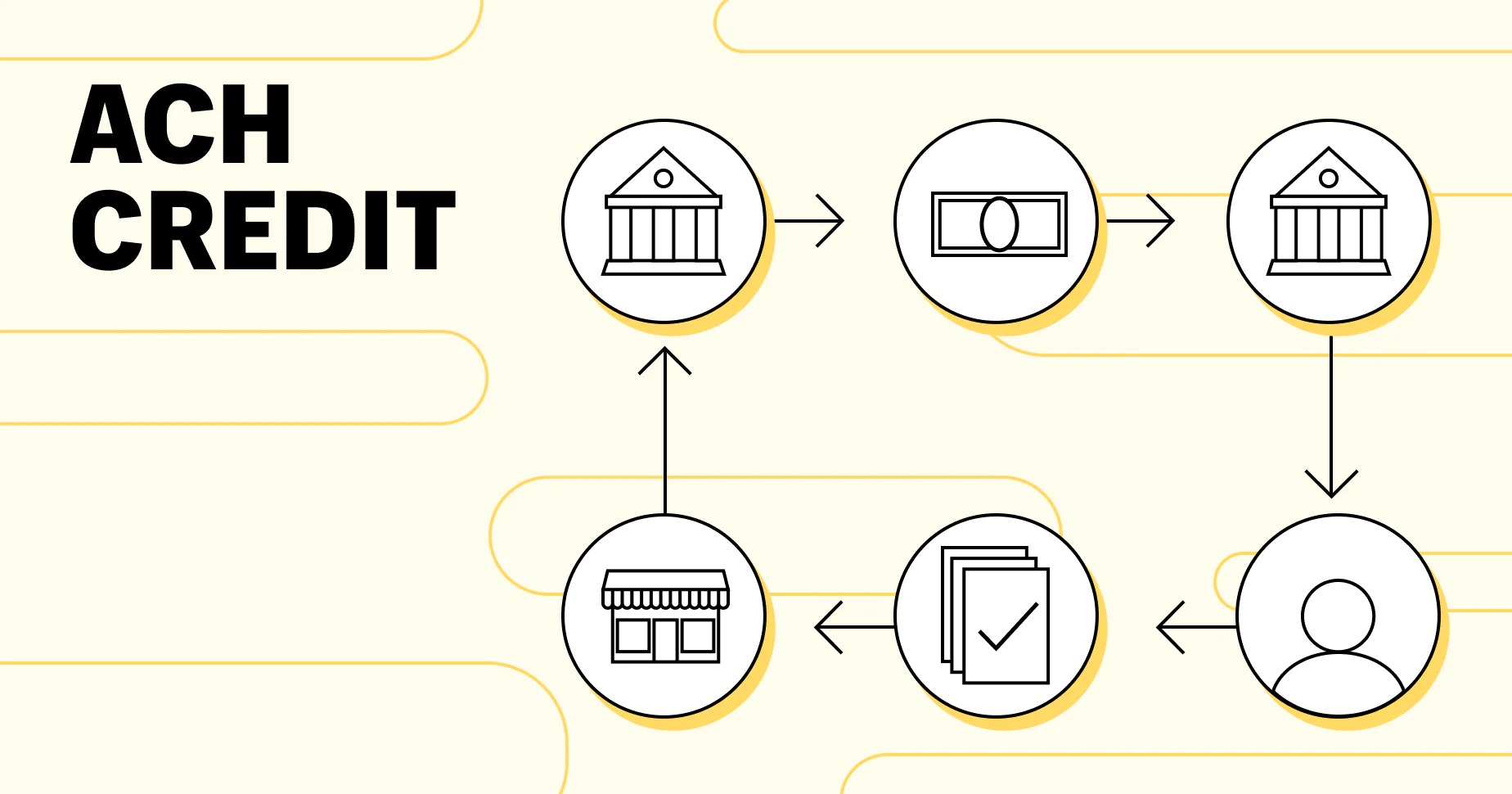

Finance
How To Learn GAAP Accounting
Published: October 8, 2023
Looking to learn GAAP accounting? Our comprehensive guide teaches you the fundamentals of GAAP and how it applies to finance. Start mastering finance today!
(Many of the links in this article redirect to a specific reviewed product. Your purchase of these products through affiliate links helps to generate commission for LiveWell, at no extra cost. Learn more)
Table of Contents
- Introduction
- Overview of GAAP Accounting
- Importance of Learning GAAP Accounting
- Basic Principles of GAAP Accounting
- Understanding Financial Statements
- Recording Transactions in GAAP Accounting
- Adjusting Entries in GAAP Accounting
- Closing Entries in GAAP Accounting
- GAAP Accounting Standards and Policies
- Applying GAAP Accounting in Practice
- Conclusion
Introduction
Welcome to the world of GAAP accounting! If you’re new to the field or looking to expand your knowledge, you’ve come to the right place. GAAP, or Generally Accepted Accounting Principles, is a set of guidelines and standards that help ensure consistency and transparency in financial reporting.
In any business, accounting plays a crucial role in managing finances, making sound financial decisions, and complying with legal requirements. GAAP accounting provides a standardized framework that helps businesses accurately record and report their financial transactions.
By learning GAAP accounting, you gain a solid foundation in understanding financial statements, interpreting financial data, and analyzing a company’s financial performance. Whether you’re an aspiring accountant, business owner, or investor, having a working knowledge of GAAP accounting is essential to navigate the complex world of finance.
In this comprehensive guide, we’ll take you through the essential concepts and principles of GAAP accounting. We’ll delve into the importance of learning GAAP accounting, the basic principles involved, and the key elements of financial statements. Additionally, we’ll explore the process of recording transactions, making adjusting entries, and closing entries in GAAP accounting.
Moreover, we’ll discuss the various GAAP accounting standards and policies that dictate how financial statements should be prepared and presented. Understanding these standards will enable you to ensure compliance and maintain accuracy in financial reporting.
Finally, we’ll provide practical insights on how to apply GAAP accounting in real-world scenarios. By applying your knowledge in practical settings, you’ll develop the skills necessary to analyze financial reports, make informed decisions, and strengthen the financial health of a business.
So, whether you’re a student embarking on an accounting career or a business professional seeking a better understanding of financial statements, this guide will equip you with the necessary tools to learn GAAP accounting effectively. Let’s dive in and unlock the secrets of this fascinating field!
Overview of GAAP Accounting
At its core, GAAP accounting provides a standardized framework for recording, classifying, and reporting financial transactions. It encompasses a set of principles, procedures, and conventions that govern how businesses prepare and present their financial statements.
The primary objective of GAAP accounting is to ensure that financial statements are reliable, transparent, and comparable across different organizations. This allows investors, creditors, and other stakeholders to make informed decisions based on accurate and consistent financial information.
GAAP accounting establishes the rules and guidelines for various aspects of financial reporting, including revenue recognition, expense recognition, asset valuation, and presentation of financial statements. These rules help create a level playing field by requiring businesses to follow the same standards when preparing their financial reports.
Moreover, GAAP accounting provides a common language of financial reporting that enables easier communication and understanding between different parties. It ensures that financial information is presented in a standardized format, making it easier to analyze and compare financial statements between companies and industries.
By following GAAP accounting principles, businesses are able to maintain accurate and reliable financial records. This not only helps in making informed business decisions but also ensures compliance with legal requirements and regulatory standards.
It is important to note that GAAP accounting is primarily applicable to publicly traded companies in the United States. These companies are required by the Securities and Exchange Commission (SEC) to follow GAAP accounting principles when reporting their financial information. However, many private companies also choose to adhere to GAAP principles to maintain consistency and transparency in their financial reporting.
Overall, GAAP accounting serves as a cornerstone for financial reporting, providing a standardized and reliable method for recording, reporting, and analyzing financial transactions. Whether you are an accountant, a business owner, or an investor, understanding the principles and concepts of GAAP accounting is essential for accurate financial analysis and decision-making.
Importance of Learning GAAP Accounting
Learning GAAP accounting is crucial for individuals in various roles within the business and financial sectors. Here are some key reasons why understanding GAAP accounting is important:
- Accurate Financial Reporting: GAAP accounting ensures that financial statements are prepared with accuracy and consistency. By following GAAP principles, companies can provide reliable and transparent financial information to stakeholders, including investors, lenders, and regulators.
- Compliance with Legal Requirements: Publicly traded companies are legally required to adhere to GAAP principles in their financial reporting. By learning GAAP accounting, professionals can ensure that their company complies with these regulations, avoiding legal consequences and potential financial penalties.
- Improved Decision-Making: Understanding GAAP accounting enables individuals to accurately analyze the financial health of a company and make informed decisions. By being able to interpret financial statements and evaluate key financial ratios, professionals can identify areas of strength and weakness and make strategic choices to improve performance.
- Effective Communication: GAAP accounting serves as a common language in the business and financial sectors. By learning GAAP principles, professionals can effectively communicate financial information to stakeholders, facilitating better decision-making and transparency.
- Enhanced Career Opportunities: Proficiency in GAAP accounting is highly valuable in the job market. Employers seek candidates with a strong foundation in accounting principles and the ability to prepare accurate financial statements. By learning GAAP accounting, individuals can enhance their career prospects and pursue roles such as financial analyst, accountant, auditor, or finance manager.
Furthermore, learning GAAP accounting can help individuals in their personal financial management. By understanding the principles of GAAP, individuals can better plan and manage their own finances, make informed investment decisions, and ensure compliance with tax regulations.
Overall, a solid understanding of GAAP accounting is essential for professionals and individuals involved in finance and accounting. It provides the necessary skills to accurately record, analyze, and report financial information, ensuring transparency, compliance, and informed decision-making.
Basic Principles of GAAP Accounting
GAAP accounting is built upon a set of fundamental principles that guide the recording, classification, and reporting of financial transactions. These principles serve as a foundation for accurate and reliable financial reporting. Here are some key principles of GAAP accounting:
- Entity Concept: According to this principle, a business entity is considered separate and distinct from its owners. This ensures that the financial transactions of the business are recorded separately from the personal finances of its owners.
- Going Concern Concept: GAAP accounting assumes that a business will continue to operate indefinitely. This concept allows businesses to value assets and liabilities based on their long-term use, rather than their liquidation value.
- Conservatism Principle: This principle requires accountants to exercise caution and conservatism when recording financial transactions. It encourages accountants to anticipate potential losses and expenses, while being more skeptical about recognizing potential gains.
- Matching Principle: The matching principle states that expenses should be matched with the revenues they help generate. This ensures that the financial statements reflect the true profitability of a company during a specific period.
- Revenue Recognition Principle: According to this principle, revenues should be recognized when they are earned and realizable, regardless of when payment is received. This ensures that revenues are recorded in the appropriate accounting period.
- Historical Cost Principle: The historical cost principle requires assets to be recorded at their original purchase cost and not their current market value. This principle promotes objectivity and reliability in financial reporting.
- Materiality Principle: This principle stresses the importance of reporting information that is significant and material to the financial statements. It allows accountants to focus on reporting items that would impact decision-making by users of the financial statements.
- Consistency Principle: The consistency principle requires businesses to use the same accounting methods and principles from one accounting period to another. This promotes comparability and ensures that the financial statements remain consistent over time.
These principles form the framework for GAAP accounting, providing professionals with a systematic approach to accurately record and report financial transactions. By adhering to these principles, businesses can ensure compliance with accounting standards, maintain transparency, and provide reliable financial information to stakeholders.
Understanding these principles is essential for individuals in accounting roles as it provides a strong foundation for accurate financial reporting, decision-making, and effective communication within the business and financial sectors.
Understanding Financial Statements
Financial statements are crucial documents that provide a snapshot of a company’s financial performance and position. They allow stakeholders to assess the financial health and viability of a business. In GAAP accounting, there are three primary financial statements: the balance sheet, income statement, and cash flow statement.
- Balance Sheet: The balance sheet provides a snapshot of a company’s financial position at a given point in time. It presents the company’s assets, liabilities, and shareholders’ equity. The balance sheet helps evaluate the company’s liquidity, solvency, and overall financial stability.
- Income Statement: The income statement, also known as the profit and loss statement, shows the company’s revenues, expenses, and net income or loss over a specific period. It highlights the company’s ability to generate profits and reveals its operating performance.
- Cash Flow Statement: The cash flow statement tracks the inflow and outflow of cash within a company over a specified period. It provides insight into the company’s cash position, its ability to generate cash from operations, and its investing and financing activities. The cash flow statement helps assess a company’s liquidity and cash management.
These financial statements work together to provide a complete picture of a company’s financial status, performance, and cash flow. They aid in decision-making, financial analysis, and comparison with industry benchmarks.
When interpreting financial statements, key ratios and metrics are often used to assess a company’s financial health. These include profitability ratios, liquidity ratios, solvency ratios, and efficiency ratios. Understanding these ratios can provide insights into a company’s profitability, liquidity, financial leverage, and operational efficiency.
It’s important to note that financial statements should be prepared in accordance with GAAP accounting principles to ensure accuracy and comparability. Adhering to GAAP guidelines ensures consistency in financial reporting, allowing stakeholders to make informed decisions based on reliable and consistent financial information.
By understanding financial statements and the key metrics used to analyze them, individuals can gain insights into a company’s financial performance, evaluate its strengths and weaknesses, and make informed decisions regarding investments, loans, and business operations.
Recording Transactions in GAAP Accounting
In GAAP accounting, recording transactions accurately is essential to maintain reliable financial records. This process involves the systematic entry of financial transactions into the accounting system. Here’s how transactions are recorded in GAAP accounting:
- Identify the Transaction: The first step is to identify the financial transaction that needs to be recorded. This can include the purchase or sale of goods, receipt or payment of cash, or any other financial activity that impacts the company’s financial position.
- Source Documents: Source documents, such as invoices, receipts, and contracts, provide evidence of the transaction. These documents should be collected and retained to support the recorded transactions.
- Journal Entries: Journal entries are used to record the details of a transaction. Each entry includes the date, accounts affected, and the amounts debited and credited. Debits and credits are recorded based on the rules of double-entry accounting, where every transaction has equal debits and credits.
- General Ledger: The general ledger is a master record of all accounts used in the accounting system. Journal entries are posted to the respective accounts in the general ledger, updating the account balances.
- Trial Balance: A trial balance is prepared to ensure that debits and credits are equal and to verify the accuracy of the recorded transactions. It summarizes the balances of all accounts and serves as a preliminary check before preparing financial statements.
Recording transactions accurately in GAAP accounting ensures that the financial statements reflect the true financial position and performance of a company. It provides a detailed record of all financial activities, helping businesses analyze their revenues, expenses, and assets accurately.
Accounting software and systems have simplified the process of recording transactions. These tools automate the posting of journal entries to the general ledger, reducing the chances of error and facilitating efficient record-keeping.
Furthermore, the process of recording transactions in GAAP accounting aligns with the principles of consistency and accuracy. By adhering to standardized recording practices, businesses ensure that their financial records are uniform and reliable, allowing for accurate financial analysis and reporting.
By understanding and applying the principles of recording transactions in GAAP accounting, individuals can maintain accurate financial records, provide transparency in financial reporting, and make informed decisions based on reliable financial information.
Adjusting Entries in GAAP Accounting
In GAAP accounting, adjusting entries are made at the end of an accounting period to ensure that financial statements accurately reflect the company’s financial position and performance. These entries are necessary because certain transactions or events may impact the financials but have not been recorded yet. Adjusting entries help provide a more accurate depiction of a company’s financials. Here’s a breakdown of the different types of adjusting entries:
- Accruals: Accruals are used to recognize revenues or expenses that have been earned or incurred but not yet recorded. For example, if a company provides services to a customer but has not yet issued an invoice, an accrual entry is made to recognize the revenue earned.
- Deferrals: Deferrals are used to record revenues or expenses that have been received or paid in advance but have not yet been earned or incurred. For instance, if a company receives payment for a service that will be provided over the next three months, a deferral entry is made to defer the revenue recognition until the service is rendered.
- Depreciation and Amortization: Adjusting entries are made to allocate the costs of long-term assets, such as property, plant, and equipment, over their useful lives. These entries help match the expense of using the asset with the revenue generated from its use.
- Accrual of Expenses: Adjusting entries are made to record expenses that have been incurred but not yet paid. This ensures that the expenses are recognized in the respective accounting period, even if payment hasn’t been made.
- Accrual of Revenues: Adjusting entries may also be made to recognize revenues that have been earned but not yet received in cash. This ensures that the revenue is recorded in the period it was earned.
Adjusting entries are typically made before financial statements are prepared, allowing for a more accurate and comprehensive view of a company’s financial position and performance. Without these entries, the financial statements may not reflect the economic reality of the business.
It’s important to note that adjusting entries should be made in accordance with GAAP accounting principles to ensure accuracy and compliance. These entries are crucial for providing a fair and accurate representation of a company’s financials to stakeholders, including investors, lenders, and regulators.
By understanding and correctly applying adjusting entries, professionals can ensure that financial statements accurately reflect the financial results of a company. This allows for more informed decision-making, better financial analysis, and increased transparency in financial reporting.
Closing Entries in GAAP Accounting
Closing entries are an integral part of the accounting cycle that help summarize the financial activities of a company for a specific accounting period. These entries are made at the end of the period (usually at the end of the fiscal year) to transfer the balances of temporary accounts to the appropriate permanent accounts. The purpose of closing entries is to reset the temporary accounts to zero in preparation for the next accounting period. Here’s a closer look at the process of closing entries:
- Identify Temporary Accounts: Temporary accounts include revenue, expense, and dividend accounts. These accounts are used to record transactions for a specific accounting period and are not carried over to the next period.
- Close Revenue Accounts: The balances of revenue accounts, such as sales revenue and service revenue, are closed by transferring their balances to the income summary account. This process effectively closes the revenue accounts and prepares them for the next accounting period.
- Close Expense Accounts: Similarly, the balances of expense accounts, including salaries expense, utilities expense, and advertising expense, are closed by transferring their balances to the income summary account. This reduces the expense accounts to zero for the new accounting period.
- Close Income Summary Account: After transferring the revenues and expenses to the income summary account, the balance of the income summary account is then closed to the retained earnings or owner’s equity account. This summarizes the net income or loss for the period.
- Close Dividend Account: If the company distributes dividends to its shareholders, the balance of the dividend account is closed to the retained earnings or owner’s equity account. This reflects the distribution of profits to the owners or shareholders.
By performing closing entries, a company can start the next accounting period with a clean slate and accurate financial records. The closing process ensures that the income and expense accounts are reset to zero, and the net income or loss is properly reflected in the retained earnings or owner’s equity account.
It’s crucial to note that closing entries should adhere to GAAP accounting principles and be accurately recorded to ensure the integrity and accuracy of financial statements. These entries play a vital role in accurately portraying the financial results of a company for a specific period.
Understanding and correctly executing the closing entry process allows professionals to maintain accurate financial records, provide transparent financial statements, and prepare for the subsequent accounting period.
GAAP Accounting Standards and Policies
GAAP accounting is governed by a set of standards and policies that provide guidelines for the preparation and presentation of financial statements. These standards ensure consistency, comparability, and transparency in financial reporting. Here are some key aspects of GAAP accounting standards and policies:
Financial Accounting Standards Board (FASB): The Financial Accounting Standards Board is the primary organization responsible for setting GAAP accounting standards in the United States. FASB establishes and updates the Generally Accepted Accounting Principles to reflect changes in economic and business environments. The standards set by FASB serve as the foundation for financial reporting in the United States.
FASB Accounting Standards Codification (ASC): The FASB Accounting Standards Codification is the primary source of GAAP accounting standards. It organizes all existing accounting standards into a single, integrated framework. The ASC provides a comprehensive and easily accessible reference for professionals to ensure compliance with GAAP standards.
Disclosure Requirements: GAAP accounting requires businesses to disclose relevant information in their financial statements to provide transparency and facilitate better decision-making by stakeholders. Disclosure requirements encompass various aspects, including significant accounting policies, contingent liabilities, related-party transactions, and subsequent events.
Consistency: GAAP accounting emphasizes the importance of consistency in financial reporting. Companies are required to consistently apply accounting methods and principles from one accounting period to another, allowing for the comparability of financial statements. Any changes in accounting policies or estimation techniques need to be disclosed and explained in the financial statements.
Materiality: Materiality is a concept in GAAP accounting that requires businesses to focus on reporting information that is material or significant to financial statements. Materiality is determined based on the nature and magnitude of the item, and its omission or misstatement could influence the economic decisions of users of the financial statements.
GAAP Principles and Concepts: GAAP accounting is guided by a set of principles and concepts that provide a framework for financial reporting. These principles include the entity concept, going concern concept, conservatism principle, matching principle, revenue recognition principle, historical cost principle, and others. These principles ensure consistency, reliability, and comparability in financial reporting.
Adhering to GAAP accounting standards and policies is essential for businesses to maintain accurate and reliable financial records. By following these guidelines, companies can provide transparent and consistent financial information, facilitate better decision-making by stakeholders, comply with legal requirements, and build trust with investors, creditors, and shareholders.
It’s important for professionals in the accounting field to stay updated with the latest GAAP accounting standards and policies to ensure compliance and provide reliable financial reporting. This includes regularly reviewing and implementing any changes or updates made by FASB and understanding the implications for financial reporting.
Applying GAAP Accounting in Practice
While understanding the principles and standards of GAAP accounting is essential, applying them in real-world scenarios is equally important. Here are some practical considerations for applying GAAP accounting in practice:
- Choosing Accounting Methods: GAAP accounting allows for flexibility in choosing accounting methods within certain boundaries. For example, businesses can choose between using the cash basis or accrual basis of accounting. However, it’s important to carefully assess the nature of the business, its size, and reporting requirements to select the most appropriate accounting methods in accordance with GAAP principles.
- Consistency in Recording Transactions: Consistency is a fundamental principle of GAAP accounting. To ensure accuracy and comparability, businesses should establish consistent procedures for recording and classifying transactions. This includes maintaining standardized chart of accounts, implementing proper documentation and source control, and consistently applying accounting policies and estimation techniques.
- Defining Accounting Policies: Businesses need to establish clear accounting policies that align with GAAP standards. These policies should outline the principles and practices applied in financial reporting, including revenue recognition, expense recognition, and asset valuation. Accounting policies should be documented and communicated to all relevant personnel to ensure consistent application across the organization.
- Ensuring Timely and Accurate Financial Reporting: GAAP accounting requires businesses to prepare and present financial statements in a timely and accurate manner. This involves conducting regular financial close processes, performing periodic reconciliations, and ensuring that adjustments and reclassifications are made as required. Attention to detail and adherence to deadlines are crucial to meet the reporting requirements set by GAAP.
- Implementing Internal Controls: Strong internal controls are essential for maintaining the integrity of financial reporting. Businesses should establish and implement internal controls to safeguard assets, prevent fraud, and ensure the accuracy and completeness of financial information. This includes segregation of duties, regular monitoring and review processes, and the use of software systems to automate and streamline accounting processes.
- Staying Updated on Regulatory Changes: GAAP accounting standards and policies are subject to updates and changes over time. It’s important for professionals to stay informed about any revisions or new requirements issued by FASB or other regulatory bodies. This includes attending training sessions, reading relevant publications, and participating in professional development opportunities to ensure compliance with the latest GAAP guidelines.
By applying GAAP accounting principles effectively, businesses can enhance the accuracy, reliability, and comparability of their financial reporting. This, in turn, strengthens the confidence of investors, creditors, and other stakeholders in the company’s financial information.
It’s crucial for accounting professionals to understand the practical implications of GAAP accounting and diligently apply them in their day-to-day work. This ensures compliance with standards and policies, enhances financial transparency, and enables effective decision-making based on reliable financial information.
Conclusion
Understanding GAAP accounting is vital for individuals in finance and accounting roles, as well as business owners and investors. GAAP accounting provides a standardized framework that ensures consistency, accuracy, and transparency in financial reporting. By following GAAP principles and guidelines, businesses can record transactions, prepare financial statements, and communicate financial information effectively.
Throughout this comprehensive guide, we have explored various aspects of GAAP accounting, including its importance, basic principles, financial statements, recording transactions, adjusting entries, closing entries, and standards and policies. Each of these elements plays a crucial role in maintaining accurate financial records, enabling informed decision-making, and complying with legal requirements.
By learning and applying GAAP accounting, professionals gain the skills to analyze financial statements, understand the financial health of a business, and make sound financial decisions. It also opens up opportunities for career advancement, as employers value individuals with a strong foundation in GAAP accounting.
However, it’s important to note that GAAP accounting standards may vary across countries. While this guide focuses on GAAP accounting principles in the United States, other regions may have their own set of accounting standards, such as IFRS (International Financial Reporting Standards). It’s crucial to be aware of the applicable accounting standards in your specific jurisdiction.
In conclusion, learning GAAP accounting empowers individuals to navigate the complexities of financial reporting, interpret financial data accurately, and contribute to the success of businesses. Whether you’re a student beginning your journey in accounting or a seasoned professional seeking to expand your knowledge, a solid understanding of GAAP accounting principles and practices is invaluable in today’s financial landscape.
Remember, GAAP accounting is a dynamic field that continues to evolve. Stay informed about the latest updates and changes in accounting principles to ensure compliance with GAAP standards. Embrace the principles of accuracy, consistency, and transparency in financial reporting, and you will be on a path to success in the world of finance and accounting.














